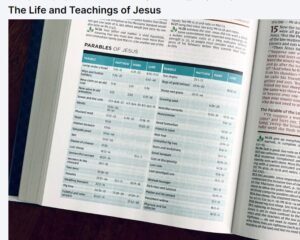Christianity is one of the world’s major religions, with billions of followers globally. But how did it all begin?
Understanding the origins of Christianity involves delving into its historical, cultural, and religious roots. This article will trace the beginnings of Christianity, exploring its foundational beliefs and key events that shaped its development.
The story of Christianity begins in the first century AD, in the region known today as the Middle East. Specifically, it emerged in Judea, a Roman province that is now part of modern-day Israel and Palestine. During this period, Judea was under Roman rule, and Jewish people were awaiting a Messiah—a savior promised in their scriptures. This expectation was deeply embedded in Jewish culture, driven by the prophecies found in the Hebrew Bible, particularly in books like Isaiah and Daniel.
The socio-political climate of Judea was marked by tension and unrest. The Roman occupation was often harsh, and many Jews resented the presence of foreign rulers. Against this backdrop of anticipation and oppression, new religious movements and messianic figures frequently emerged, hoping to fulfill the prophecies and deliver the Jewish people from Roman rule.
The Role of Judaism
Christianity’s roots are deeply intertwined with Judaism. Jesus of Nazareth, who is central to Christian beliefs, was himself a Jew. Jewish religious traditions, scriptures, and expectations of the Messiah laid the groundwork for the Christian faith. The Hebrew Scriptures, known to Christians as the Old Testament, provided the prophecies and theological framework that early Christians used to explain Jesus’ life and mission.
Jesus and his earliest followers observed Jewish laws and customs, participated in synagogue worship, and revered the Torah. Many of Jesus’ teachings were interpretations or expansions of Jewish laws and traditions. This connection to Judaism was both a source of strength and tension as Christianity began to distinguish itself as a separate faith.
Roman Influence
The Roman Empire’s extensive reach and infrastructure, including roads and communication networks, played a significant role in the spread of early Christianity. The Pax Romana, a period of relative peace and stability across the empire, allowed for easier travel and dissemination of ideas. Roman roads and sea routes enabled missionaries to travel vast distances, reaching diverse populations.
Additionally, the common language of Greek, thanks to the earlier conquests of Alexander the Great, facilitated communication across different regions. The use of Greek in the New Testament writings helped make the Christian message accessible to a broad audience. The Roman legal system, while often a source of persecution, also provided a framework within which early Christians could appeal for justice and protection.
The Life and Teachings of Jesus

The central figure in Christianity is Jesus Christ. According to Christian beliefs, Jesus was born in Bethlehem around 4 BC and grew up in Nazareth. His life and teachings form the foundation of Christian doctrine. Jesus’ teachings emphasized love, compassion, and forgiveness, challenging the legalistic and ritualistic practices of contemporary Judaism.
Birth and Early Life
The New Testament, particularly the Gospels of Matthew and Luke, provides accounts of Jesus’ birth. Christians believe that Jesus was born to the Virgin Mary through a miraculous conception, fulfilling ancient prophecies about the Messiah’s birth. The story of Jesus’ birth is often retold during Christmas, highlighting elements like the visit of the Magi, the shepherds, and the angelic announcements.
Jesus’ early life, though not extensively documented, is believed to have been spent in Nazareth. The Gospels recount an episode from his youth where he amazed the teachers in the Temple with his understanding of the scriptures. This event is seen as a precursor to his later ministry, indicating his deep connection with God from a young age.
Ministry and Miracles
Around the age of 30, Jesus began his public ministry. He traveled throughout Judea and Galilee, preaching about the Kingdom of God, love, and repentance. He performed numerous miracles, such as healing the sick, raising the dead, and feeding thousands with a few loaves and fishes, which attracted a significant following. His teachings often used parables—simple stories with profound moral and spiritual lessons.
Jesus’ ministry also involved challenging the religious authorities of his time, criticizing their hypocrisy and calling for a return to genuine faith and righteousness. His radical message of love, including loving one’s enemies, and his association with outcasts and sinners often put him at odds with the religious elite. This tension ultimately led to his arrest and crucifixion.
Crucifixion and Resurrection
The pivotal event in Christian belief is the crucifixion and resurrection of Jesus. According to the Gospels, Jesus was arrested, tried, and crucified by the Romans around AD 30-33. Christians believe that Jesus’ death was a sacrifice for humanity’s sins and that he rose from the dead three days later, conquering death and offering eternal life to all who believe in him. This event is commemorated during Easter, which is the most important festival in the Christian calendar.
The resurrection is seen as the ultimate proof of Jesus’ divinity and the cornerstone of Christian faith. It provided the disciples with renewed courage and conviction to spread Jesus’ teachings. The resurrection narrative also includes appearances of Jesus to his disciples, reaffirming his teachings and commissioning them to continue his work.
The Spread of Christianity
After Jesus’ resurrection, his followers, known as apostles, began spreading his teachings. This period marks the beginning of the Christian Church. The early Christian community, initially centered in Jerusalem, quickly began to spread to other regions, propelled by the missionary zeal of the apostles.
The Apostles and Early Church
The apostles, particularly Peter and Paul, played crucial roles in establishing early Christian communities. They traveled extensively, preaching the gospel and converting people to Christianity. Paul’s missionary journeys, in particular, were instrumental in spreading Christianity beyond Jewish communities to Gentiles (non-Jews). His letters to various churches form a significant part of the New Testament, offering guidance and theological insights.
Peter, considered the leader of the apostles, focused much of his ministry in Jerusalem and later in Rome. The early Church faced numerous challenges, including internal disputes and external persecution, but it remained resilient and continued to grow. The communal lifestyle of early Christians, characterized by sharing resources and caring for the needy, also attracted many converts.
Persecution and Martyrdom
Early Christians often faced persecution from both Jewish authorities and the Roman Empire. Despite this, the faith continued to grow, partly due to the commitment and martyrdom of its followers. Stories of early martyrs, who chose to die rather than renounce their faith, inspired others to join the movement. Figures like Stephen, the first Christian martyr, and apostles like Peter and Paul, who were executed for their faith, became powerful symbols of dedication and courage.
The Roman persecutions, while brutal, also served to unify and strengthen the Christian community. The shared suffering and the hope of eternal life fostered a deep sense of solidarity among believers. Over time, the stories of martyrs were documented and circulated, further inspiring faith and commitment among Christians.
Formation of Christian Texts
During the first few centuries, Christian leaders and scholars began writing texts that would later form the New Testament. These writings included the Gospels, letters (epistles) from apostles like Paul, and apocalyptic literature such as the Book of Revelation. These texts were eventually compiled and canonized, providing a foundational scripture for the Christian faith. The process of canonization involved debates and councils to determine which writings were divinely inspired and authoritative.
The New Testament, along with the Old Testament, formed the Christian Bible, which became the central religious text for Christians. These scriptures were copied and distributed widely, aiding the spread of Christian teachings. The development of a standardized set of texts helped unify the diverse Christian communities and provided a common foundation for belief and practice.
The Evolution of Christian Beliefs
As Christianity spread, it began to evolve and develop distinct beliefs and practices. The early Church had to address various theological questions and disputes, leading to the development of doctrines and creeds that defined Christian orthodoxy.
The Trinity and Christology
One of the central theological developments was the doctrine of the Trinity, which defines God as three persons in one essence: the Father, the Son (Jesus Christ), and the Holy Spirit. Additionally, early Christians grappled with understanding the nature of Jesus, leading to the development of Christology—the study of Christ’s nature and his relationship with God. These theological explorations were essential in distinguishing Christian beliefs from other religious traditions.
The debates over the nature of Jesus—whether he was fully divine, fully human, or both—led to various heresies and the need for clarification. The Council of Chalcedon in AD 451, for example, declared that Jesus is one person in two natures, fully divine and fully human. These doctrinal definitions were crucial in maintaining unity and orthodoxy within the Christian Church.
Councils and Creeds
To address various theological disputes, early Christian leaders convened councils. The Council of Nicaea in AD 325, for example, produced the Nicene Creed, a statement of faith that articulated key Christian beliefs about the Trinity and the divinity of Jesus. These councils helped unify Christian doctrine and combat heresies. The Nicene Creed, in particular, remains a central statement of faith for many Christian denominations.
Other important councils, such as the Council of Ephesus and the Council of Chalcedon, further defined Christian doctrine and addressed controversies. These gatherings were attended by bishops and theologians from across the Christian world, reflecting the growing organizational structure of the Church. The creeds formulated in these councils continue to be recited in Christian liturgy and serve as foundational expressions of Christian belief.
Sacraments and Worship Practices

Christian worship practices also began to take shape during this period.
The early Church established sacraments such as baptism and the Eucharist (communion) as central rites. These practices, along with preaching, prayer, and hymn-singing, formed the core of Christian worship. Baptism, often performed by immersion, symbolized the believer’s purification and new life in Christ.
Christianity’s Role in the Roman Empire
Constantine and the Edict of Milan
A significant turning point in Christian history was the conversion of Emperor Constantine. In AD 313, Constantine issued the Edict of Milan, granting religious tolerance throughout the Roman Empire. This decree ended the persecution of Christians and allowed the faith to flourish openly. Constantine’s conversion and support for Christianity significantly altered the religious landscape of the Roman Empire.
Constantine also played a role in convening the Council of Nicaea, seeking to unify and strengthen the Church. His reign marked the beginning of a new era where Christianity moved from being a persecuted faith to becoming a central and influential religion within the empire. The construction of monumental churches, such as the original St. Peter’s Basilica in Rome, reflected this newfound status.
Theodosius and Official Religion
By the end of the 4th century, under Emperor Theodosius I, Christianity became the official religion of the Roman Empire. This established the Church as a powerful institution, influencing various aspects of Roman society and governance. Theodosius’ policies suppressed pagan practices and promoted Christian orthodoxy, further entrenching the Church’s authority.
The integration of Christianity into the fabric of the Roman state had profound implications. It led to the development of a state-supported Church hierarchy and the blending of religious and political power. The Church’s influence extended into law, education, and social services, shaping the culture and values of the empire for centuries to come.
Tracing the origins of Christianity reveals a rich tapestry of historical, cultural, and religious influences. From its beginnings in a small Jewish community to its spread across the Roman Empire and beyond, Christianity has grown into a global faith.

